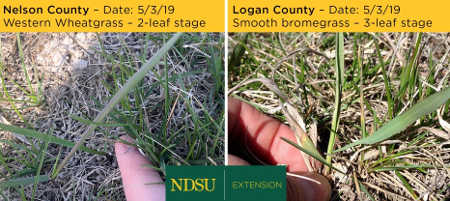
In an effort to get them out of muddy lots, many producers turned livestock out on grass earlier than normal this spring. While this decision likely enhanced herd health, it can have long-term impacts on grasslands if supplemental feed is not provided, says Miranda Meehan, North Dakota State University Extension livestock environmental stewardship specialist.
“Grazing forage too early in the spring can be costly in terms of total forage production during the entire grazing season,” Meehan says. “Grazing before grass plants reach the grazing readiness phase causes as much as a 60% reduction in herbage production, which can reduce stocking rate and animal performance.”
The timing of grazing readiness depends on a number of factors, including the species of grass, available moisture, weather and past management. As a result of these factors, the exact timing of grazing readiness can vary across a state and from pasture to pasture.
To address this variability and help landowners identify grazing readiness in their areas, Meehan is working with Extension agents across the state to monitor grazing readiness this spring.
“Grazing readiness for most domesticated pasture is at the three-leaf stage, whereas grazing readiness for most native range grasses is the 3 1/2-leaf stage,” she says.
In North Dakota, most cool-season native range grasses typically reach grazing readiness in mid- to late May, which is the recommended time to begin grazing native range. Domesticated grass pastures, such as crested wheatgrass and smooth brome, reach grazing readiness two to four weeks earlier than native range, permitting grazing in late April to early May.
Despite what seemed like a late spring, grazing readiness seems to be on track, Meehan says. According to last week’s monitoring data, domesticated pastures in much of the state are ready to be grazed. Cool-season native grasses, which dominate rangelands in much of North Dakota, are on track to reach grazing readiness in early June.
“It is important to monitor grazing readiness of your pastures prior to turnout,” she says. “Because of the ecological and economic impacts of grazing native rangeland prior to grazing readiness, the rangeland may take years to recover if livestock are allowed to overgraze for many years in a row.”
Source: ndsu.edu